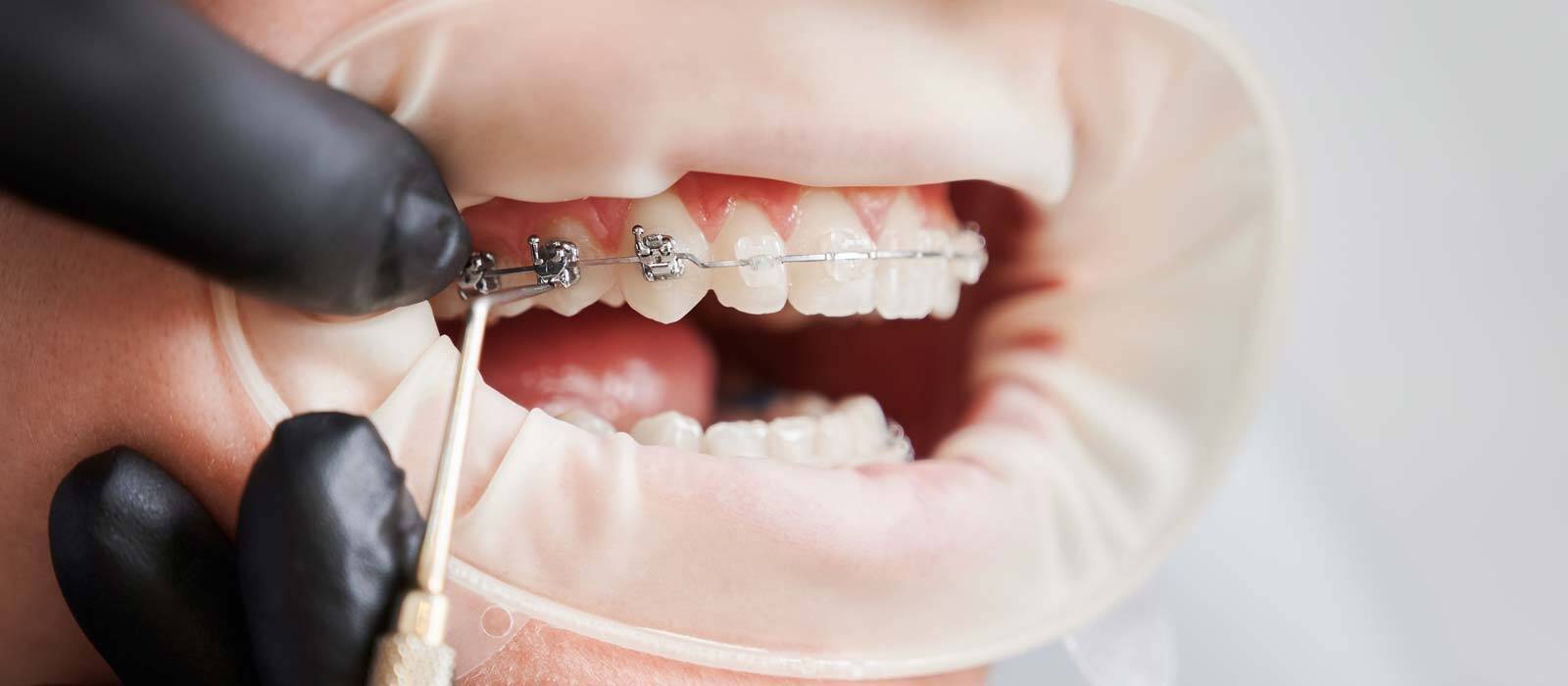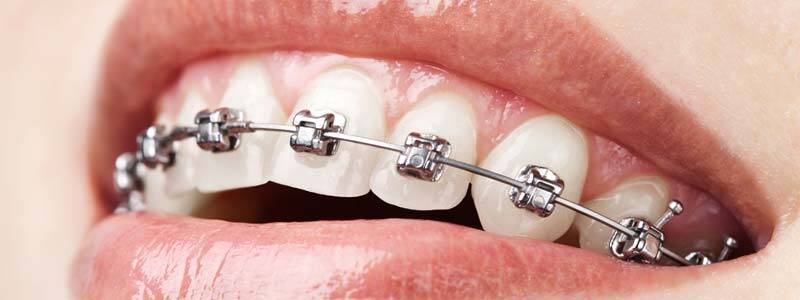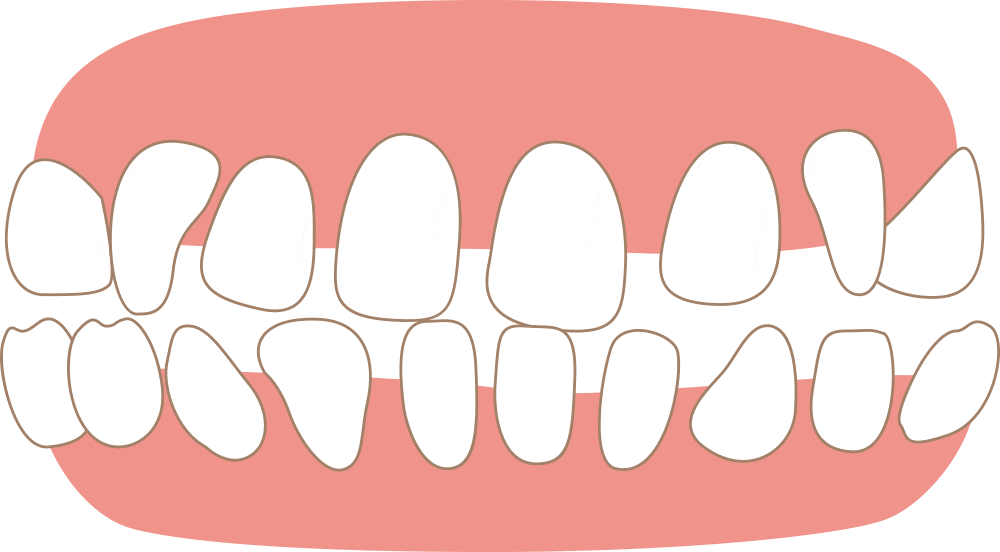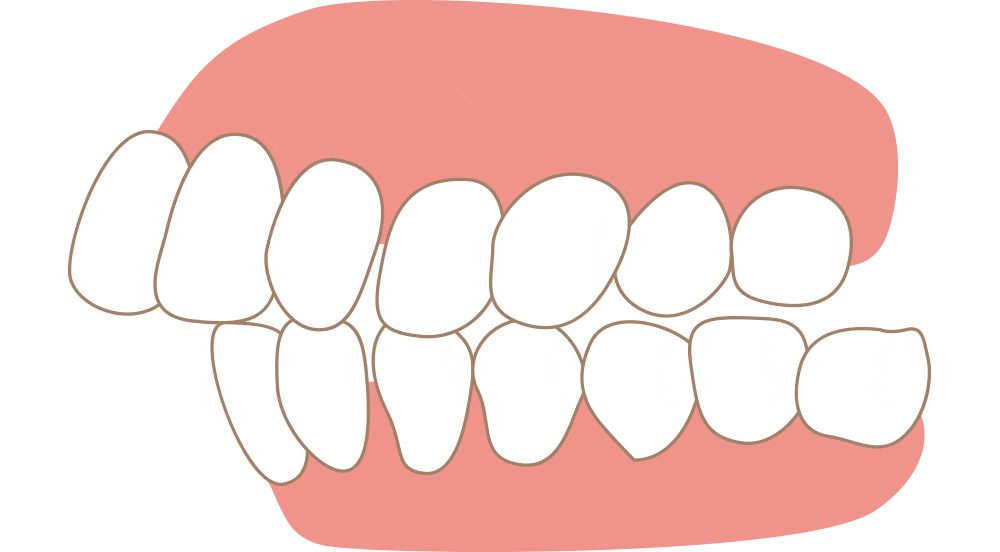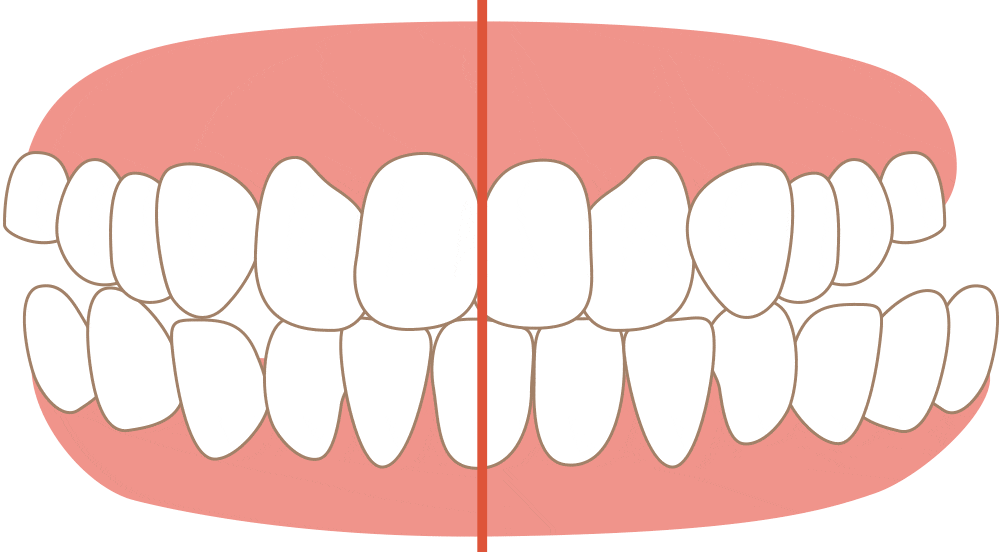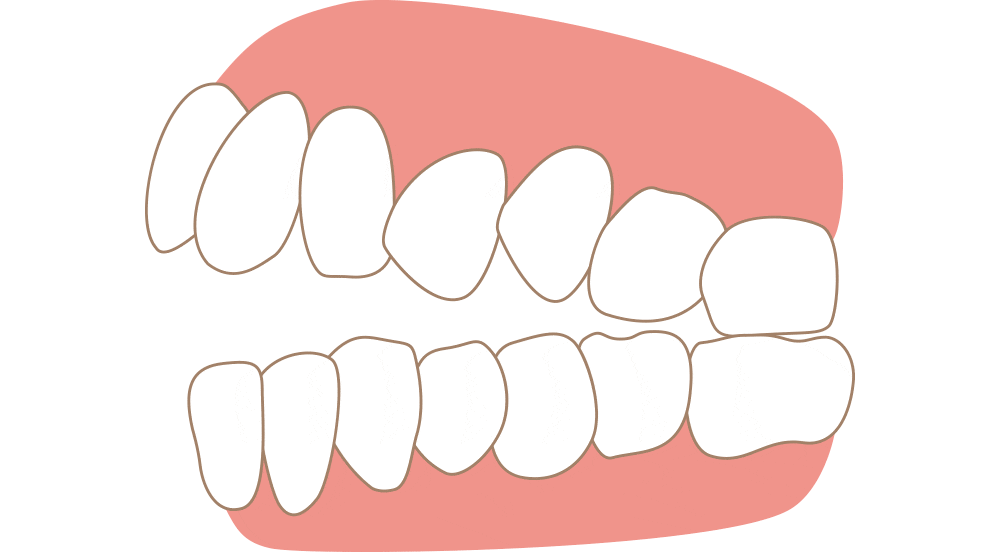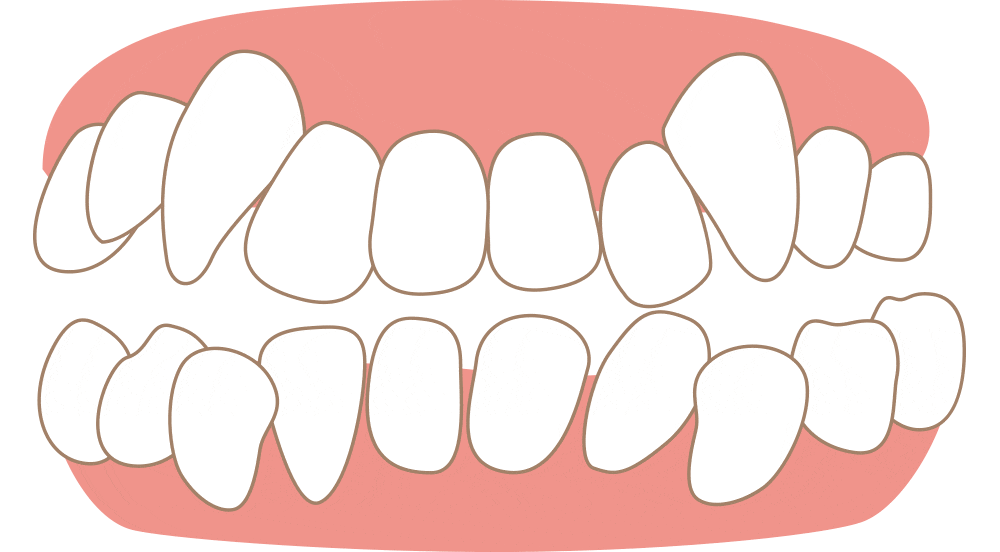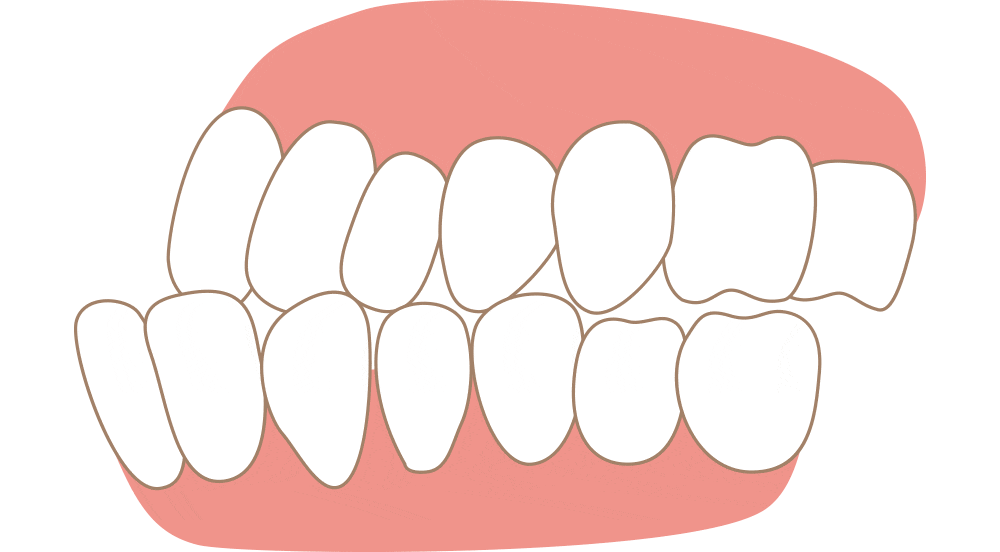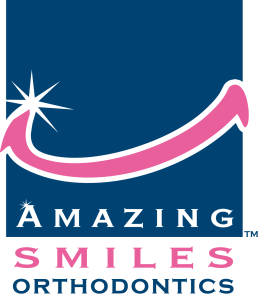
Save up to 75% OFF* for Orthodontics
What is Orthodontics?
Orthodontics is a specialized branch of dentistry that focuses on diagnosing, preventing, and treating dental and facial irregularities.
Orthodontic treatment aims to improve teeth and jaws’ appearance, function, and health.
Our Affordable orthodontic services include Traditional Braces or Removable Clear Braces.
Orthodontic treatment typically involves using various dental appliances, such as braces, wires, and aligners, to apply gentle pressure to the teeth and jaws over a period of time.
This pressure gradually moves the teeth into their correct position, corrects the bite and aligns the jaws.
The length of treatment can vary depending on the patient’s specific needs, but it typically takes between 12-36 months.
Orthodontic treatment can address many issues, including crowded or crooked teeth, gaps between teeth, overbite, underbite, crossbite, open bite, and other alignment problems.
These issues can significantly impact a person’s appearance, oral health, and overall quality of life.
Orthodontic treatment is typically provided by a specialist dentist or an orthodontist who has undergone additional training and education beyond dental school to provide specialized care in this field.
Orthodontic treatments for Malocclusion
Malocclusion is a dental condition in which the teeth do not align properly when the jaws are closed. This can cause functional and aesthetic problems, such as difficulty chewing, speech problems, and an unattractive smile. Our dentists can recommend the appropriate treatment for you with a complimentary consult.
Braces from $3,750**
**Single Arch Estimate. Prices are based on the specific needs and timeframes per individual case.
Aligners from $4,750*
Amazing Smiles Orthodontics!
- Braces from $3,750* compared to national costs of $9,000.
- Flexible payment plan options suited to your budget! Payments can be made weekly or monthly.
- We treat mild, moderate, to complex orthodontic cases. Prices vary upon alignment complexity and duration of treatment.
- An experienced dentist performs all consultations and necessary adjustments throughout your journey.
- Capable of providing all dental needs, we use a combination of dental techniques to attain optimum results.
Orthodontics is a branch of dentistry that focuses on diagnosing, preventing, and treating dental and facial irregularities, including teeth misalignment, overcrowding, and bite issues. Orthodontic treatment typically involves using braces, clear aligners, or other dental appliances to straighten teeth, correct jaw alignment, and improve the overall appearance and function of the teeth and mouth.
Getting orthodontics means undergoing orthodontic treatment to correct dental and facial irregularities. This typically involves consulting with an orthodontist, who will evaluate your teeth and mouth and recommend a treatment plan based on your specific needs and goals. Orthodontic treatment can take several months to several years, depending on the severity of the issues being addressed, and involves regular appointments with your orthodontist to adjust your braces or aligners and monitor your progress.
Patients with “Extras” cover might have their private insurance cover some of the braces costs. Although, this varies between Private Health Funds. Therefore, please check with your provider to clarify if your package includes orthodontics. Some Private Health Insurance providers do not have orthodontics as part of their “Basic Extras”, but have it as part of their higher levels of “Extras”.
If you’re unsure, please get in touch with our team to discuss in detail what your package may include for dental.
Orthodontics is NOT covered under Medicare or Child Dental Benefits Schedule.
Orthodontic Item Numbers (treatments may differ based on patients’ needs):
- 825 Sequential plastic aligners – per arch
- 831 Full arch banding – per arch
- 881 Complete course of orthodontic treatment
Amazing Smiles prides itself on providing accessible, affordable dental services to the local community. We’ve streamlined our orthodontic procedures to have less time in-chair. Our in-house aligners are also Australian-made and designed, providing more savings to our patients. Established in 2000, Amazing Smiles have performed thousands of alignment and cosmetic dental cases. Meaning our experience and knowledge is passed onto every patient to achieve optimum results.
An orthodontist and a dentist promote good oral health and maintain healthy teeth and gums. However, there are significant differences between the two professions regarding their education, training, and the types of services they offer.
A general practitioner provides various dental services, including preventive care, routine checkups, fillings, root canals, and extractions. They are also trained to diagnose and treat common oral health problems such as gum disease, tooth decay, and oral infections.
On the other hand, an orthodontist is a dental specialist who focuses on the alignment of the teeth and jaws. After dental school, they complete additional years of specialised orthodontic training. They are experts in diagnosing and treating malocclusions (misaligned teeth and jaws) using braces, aligners, and other orthodontic appliances.
While dentists and orthodontists are licensed to practice general dentistry, orthodontists have the additional expertise and training needed to provide specialized orthodontic care. If you seek treatment to correct misaligned teeth or jaws, an orthodontist is the best choice to ensure optimal results.
In Australia, practitioners or clinics registered as orthodontists are only reserved for performing that sole purpose. To perform other dental services, orthodontists must refer patients elsewhere. In contrast, practitioners who provide general dentistry but have been trained in orthodontics can perform additional dental treatments.
Teeth can move after orthodontic treatment for several reasons, which stem from natural processes and factors related to the biology of the teeth, bone, and surrounding tissues.
Understanding these factors helps take preventive measures to maintain the results of orthodontic work.
Below are the key reasons why teeth move after orthodontic treatment:
1. Elastic Memory of Periodontal Ligaments
Periodontal ligaments—elastic fibres that allow teeth to move slightly during chewing and speaking—anchor teeth to the jawbone.
During orthodontic treatment, these ligaments are stretched or compressed as teeth are repositioned.
However, these fibres have a natural “memory” and tend to pull the teeth back to their original positions once braces or aligners are removed. This tendency can lead to relapse, especially if retention measures are not followed closely.
2. Bone Remodeling Takes Time
When teeth are moved into new positions, the bone around them also needs to change and adapt—a process called bone remodelling. This involves resorption (removal) of bone on one side of the tooth and deposition (formation) of bone on the other.
Bone remodelling is a gradual process that continues after the braces are removed. If the bone has not fully stabilized around the teeth’ new positions, they can move more quickly.
The period immediately after orthodontic treatment is critical; retainers help keep the teeth stable.
3. Natural Mesial Drift
Teeth naturally tend to move throughout life due to mesial drift, where teeth gradually move toward the front of the mouth. This movement is slow but consistent and is influenced by factors like chewing forces.
Mesial drift is a natural process that occurs regardless of orthodontic treatment and can lead to slight shifting or crowding over time.
The front teeth are particularly prone to this type of movement, so lifelong retainer use is often recommended to counteract it.
4. Changes in Soft Tissue Pressures
The tongue, cheeks, and lips muscles exert pressure on the teeth, influencing tooth position. Braces or aligners help counteract these forces.
Once the treatment ends, however, the balance of forces can change, especially if certain habits are present, such as tongue thrusting or pressing the tongue against the front teeth.
These pressures can gradually cause teeth to shift over time.
Orthodontic treatment often focuses on adjusting teeth’ alignment, but soft tissue habits should also be addressed to ensure long-term stability.
5. Growth and Development
For younger patients who undergo orthodontic treatment, growth is still occurring.
After orthodontic appliances are removed, the jawbones, facial structure, and other oral components can continue to grow and develop.
As these parts of the mouth grow and change shape, the alignment of teeth can be affected, leading to natural movement. This type of shifting is prevalent during the late teenage years and early adulthood as the body develops.
6. Lack of Proper Retention
Retention is a vital phase of orthodontic treatment. Retainers keep teeth in their new positions while the ligaments and bones stabilize.
If retainers are not worn as prescribed, the teeth can quickly return to their original positions. This can happen even more rapidly during the first few months after braces or aligners are removed, as the tissues are still adjusting to their new positions.
Even slight inconsistencies in wearing retainers can lead to unwanted movement, underscoring the importance of closely following the orthodontist’s retention instructions.
7. Wisdom Teeth Eruption
The eruption of wisdom teeth, typically between the ages of 17 and 25, can sometimes contribute to the shifting of other teeth, especially if there is limited space in the jaw.
Wisdom teeth can push against the molars, creating pressure that leads to movement or crowding of other teeth.
While not all patients experience noticeable effects from wisdom teeth, some find that this eruption period coincides with a change in their dental alignment.
8. Bite Forces and Chewing
How a person chews, and the forces exerted during biting can also influence tooth movement. Teeth that receive more force, such as those involved in biting or grinding, are more likely to move over time.
Patients who grind or clench their teeth, a condition called bruxism, may be more susceptible to post-treatment shifting because of the constant pressure applied to the teeth. These forces can cause subtle shifts that accumulate over the years.
Preventing Teeth Movement After Orthodontic Treatment
To maintain the results of orthodontic treatment and prevent teeth from moving back, several measures are crucial:
Wearing Retainers as Prescribed
Retainers play a significant role in ensuring the long-term stability of teeth.
Removable retainers should be worn as directed—typically full-time initially, then transitioning to nightly use.
Fixed retainers are also effective for keeping teeth in place, particularly in patients prone to relapse.
Addressing Soft Tissue Habits
It is important to correct habits that exert pressure on teeth, such as thumb-sucking or tongue thrusting.
An orthodontist may provide exercises or recommend appliances to help eliminate these habits.
Monitoring Growth and Eruption of Wisdom Teeth
Regular check-ups with your dentist are essential to monitor wisdom teeth and assess whether their removal is necessary to avoid crowding or pressure on adjacent teeth.
Routine Dental Visits
Continued follow-up appointments with the orthodontist or dentist are essential for early detection of any movement.
Retainer checks and adjustments can ensure that everything is working correctly to maintain alignment.
Manage Bruxism
If grinding or clenching is an issue, wearing a night guard can help protect teeth and reduce the forces that might lead to movement.
Some degree of movement is natural and expected after orthodontic treatment, but diligent retention and monitoring can help ensure that the treatment’s results are preserved for years to come.
Retention is not a one-time phase but often a lifelong commitment to maintaining a straight, healthy smile.
Elastic bands, or rubber bands, are an important part of orthodontic treatment with braces, used primarily to correct bite issues and align the upper and lower teeth. They apply pressure between the upper and lower jaws to fix problems like overbite, underbite, crossbite, and open bite.
Elastics also help accelerate tooth movement by adding force that braces alone cannot provide, ensuring both alignment and bite issues are addressed efficiently.
There are different types of elastics, such as Class II (for overbites) and Class III (for underbites), depending on the specific alignment issues. They attach to small hooks on the braces, and patients are responsible for wearing them as prescribed, typically for 20-22 hours a day.
Compliance is key—wearing elastics properly helps reduce treatment time and achieve the best results.
Elastics can be uncomfortable at first, but this usually subsides as patients adjust. The success of orthodontic treatment involving elastics depends largely on wearing them consistently, as skipping or removing them can delay progress.
Despite minor challenges, elastics are crucial in creating a well-aligned and functional smile.
There are several factors that can influence the cost of dental braces, including:
- Type of braces: There are several types of braces, such as traditional metal braces, ceramic braces, lingual braces, and clear aligners. Each type has a different cost, with traditional metal braces generally being the least expensive and lingual braces and clear aligners being the most expensive.
- Severity of the case: The complexity of the dental issue being addressed can also impact the cost of braces. More severe cases may require longer treatment times and more frequent adjustments, which can drive up the cost.
- Length of treatment: The length of time a patient needs to wear braces can also affect the price. Longer treatment times generally require more frequent adjustments and can increase the overall cost.
- Additional procedures: Sometimes additional procedures, may be recommended to achieve optimum results for your smile, which can add to the overall cost. These procedures might be required before or after:
- Dental Fillings
- Gum Treatment
- Tooth extractions
- Composite Bonding
- Dental Crowns
- Jaw Surgery – required referral to an oral maxillofacial surgeon.
As a result of these differing factors, dental braces are quoted on a case by case basis. Therefore, we provide a FREE analysis* for a personalized quote for dental braces. Simply complete the form below to arrange an in-chair consult.
*No treatment is provided during free consultation.
We accept all major health funds
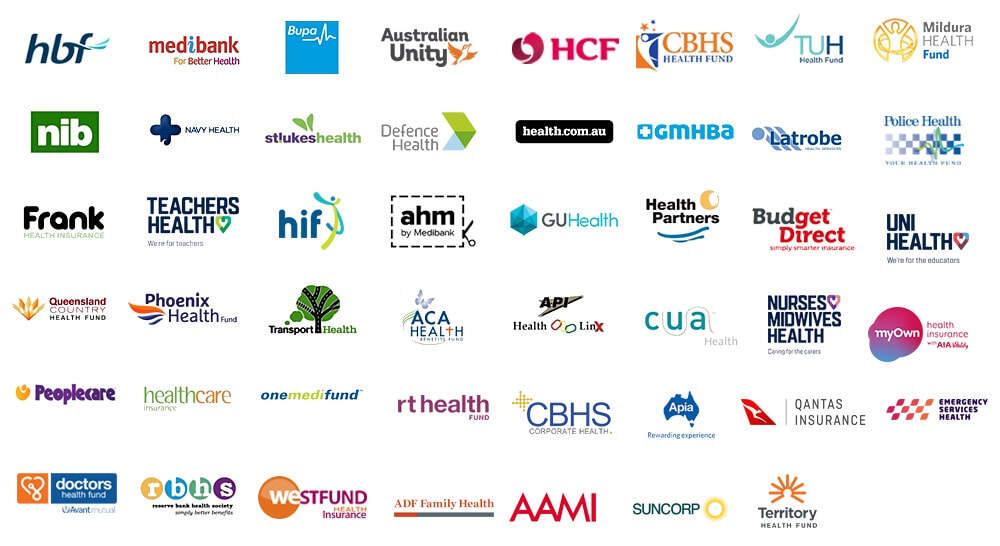
Make an Enquiry
At Amazing Smiles, we are at the forefront of orthodontics, utilizing modern techniques and technology to provide exceptional results. Our revolutionary orthodontic services are primarily available at our family-friendly Gold Coast, Logan, Jimboomba, and Bray Park clinics. Completing this form takes the first step towards achieving the smile you've always dreamed of.


